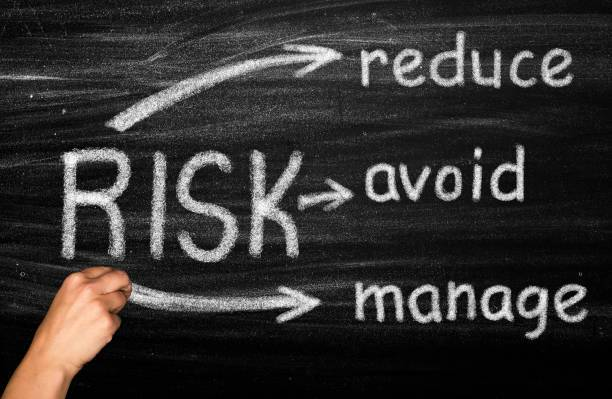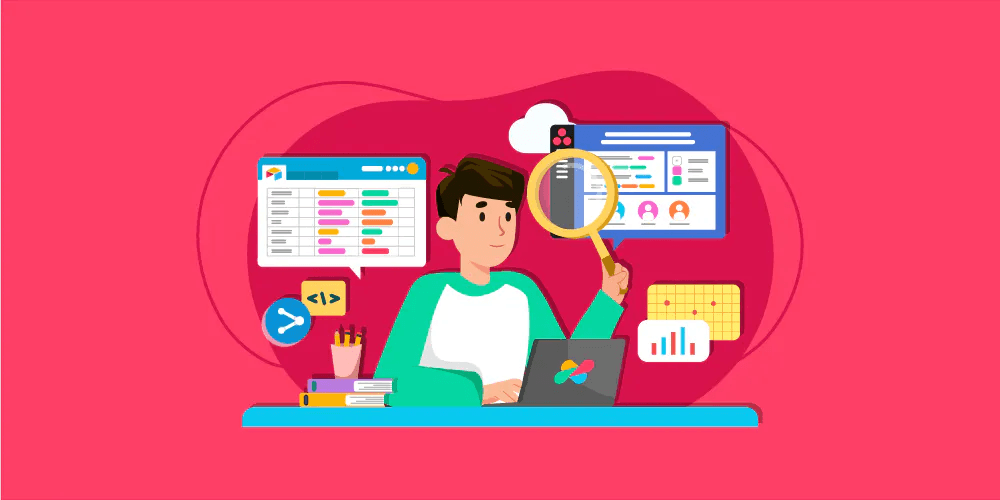In the unpredictable landscape of business, the only constant is change. As entrepreneurs and business leaders, we navigate a world brimming with uncertainties and challenges. However, the savvy businessperson recognizes that these uncertainties aren't just obstacles; they're opportunities to strengthen and safeguard their enterprise. Risk mitigation strategies are the arsenal in this endeavor, essential tools that empower us to predict, prepare for, and respond to potential risks.
But why should we pay such close attention to risk mitigation? Well, let's consider the fact that, historically, businesses that have proactively managed risks are the ones that have not just survived but thrived in tumultuous times. From the financial crisis of 2008 to the global pandemic in 2020, we've witnessed how unforeseen events can shake the foundations of even the most established businesses.
In this article, we delve into the top five risk mitigation strategies that every business should have in their toolkit. These aren't just theoretical concepts; they are practical, actionable tactics that have been tried and tested in the real world of business.

 Understanding and Identifying Risks
Understanding and Identifying Risks
Before we can talk about mitigating risks, we must first understand and identify them. It's like preparing for a journey; you need to know the potential roadblocks and weather conditions to plan your route effectively.
Types of Risks Businesses Face
Businesses encounter various risks, ranging from financial and operational to strategic and compliance-related. For instance, financial risks could include market fluctuations affecting your revenue, while operational risks might involve supply chain disruptions. On the other hand, strategic risks can arise from changes in consumer behavior or technological advancements, and compliance risks are linked to legal and regulatory requirements.
Tools for Risk Identification
The key to successful risk mitigation lies in accurately identifying potential risks. This is where tools like SWOT analysis (Strengths, Weaknesses, Opportunities, Threats) and PEST analysis (Political, Economic, Social, Technological) come into play. These frameworks help businesses systematically break down their internal and external environments to spot potential risks.
Moreover, engaging with tools like the Edworking online Management Aptitude Test can provide insights into your team's capability to handle various business risks. Understanding your team's strengths and weaknesses is crucial in preparing for and mitigating risks effectively.
Regular Risk Assessment
It's not enough to identify risks once and forget about them. The business environment is constantly evolving, and so are the risks associated with it. Regular risk assessments are essential. This involves revisiting your risk analysis frameworks periodically and adjusting them according to new market trends, technological changes, or shifts in regulatory landscapes.
 Developing a Proactive Risk Management Plan
Developing a Proactive Risk Management Plan
Once you have a firm grasp of the risks your business faces, the next step is crafting a proactive risk management plan. This is your roadmap to not just survive, but thrive amidst uncertainties.

Creating a Risk Management Framework
A risk management framework is essentially a structured approach to addressing and managing risks. It involves setting up procedures for risk assessment, mitigation, monitoring, and review. An effective framework includes:
- Risk Identification: As previously discussed, identify all potential risks using tools like SWOT and PEST analyses.
- Risk Analysis: Determine the likelihood and impact of each risk. This helps in prioritizing which risks need immediate attention.
- Risk Response Planning: Develop strategies for each identified risk. This could include avoiding, transferring, mitigating, or accepting risks based on their nature and impact.
Implementing Risk Management Practices
Once the framework is in place, the focus shifts to implementing it. This could involve:
- Employee Training: Employees should be educated about potential risks and trained in the protocols established for managing them.
- Regular Monitoring and Reporting: Establish a system for monitoring risks and reporting any occurrences or changes in risk status.
- Continuous Improvement: Risk management is an ongoing process. Regularly review and update your strategies to adapt to new risks or changes in existing ones.
 Leveraging Technology for Risk Mitigation
Leveraging Technology for Risk Mitigation
In today's digital age, technology plays a pivotal role in risk mitigation. Leveraging the right technological tools can provide a significant edge in predicting, analyzing, and managing risks.

Risk Management Software
Risk management software can automate many aspects of the risk management process, from risk identification to reporting and analysis. These tools can provide real-time data, predictive analytics, and streamlined reporting, making the risk management process more efficient and effective.

Cybersecurity Measures
With the increasing reliance on digital platforms, cybersecurity has become a critical aspect of risk mitigation. Implementing robust cybersecurity measures such as firewalls, encryption, anti-malware software, and regular security audits is essential to protect your business from cyber threats.
Data Backup and Recovery
Another crucial technological aspect of risk mitigation is ensuring your business has a reliable data backup and recovery system. This includes regular backups of important data and having a recovery plan in place in case of data loss due to cyber attacks, system failures, or natural disasters.
Technology not only makes risk management more efficient but also allows for more sophisticated approaches to predicting and handling risks. As we continue to explore risk mitigation strategies, remember that technology is your ally in this journey.
 Financial Risk Management
Financial Risk Management

An often-overlooked yet critical aspect of risk mitigation is managing financial risks. Financial stability is the backbone of any business, and safeguarding it requires strategic planning and management.
Diversifying Income Streams
Putting all your eggs in one basket can be a risky business move. Diversification is key. This could mean exploring new markets, developing additional products or services, or even investing in different asset classes. By diversifying your income streams, you reduce the risk of a significant financial setback if one area of the business faces challenges.
Effective Budgeting and Cash Flow Management
Effective budgeting isn't just about tracking expenses; it's about strategically allocating resources to maximize efficiency and growth. Similarly, cash flow management is crucial. Ensuring you have enough cash on hand to cover your liabilities can make or break your business in times of financial strain.
Insurance and Hedging Strategies
Insurance is a fundamental tool for transferring financial risk. From general liability to property insurance, ensuring adequate coverage can protect your business from unforeseen losses. Hedging, on the other hand, is more about neutralizing financial risk, particularly in areas like currency exchange or investment portfolios.
 Building a Resilient Organizational Culture
Building a Resilient Organizational Culture
The human element of your business plays a pivotal role in risk mitigation. A resilient organizational culture can be your first line of defense against various risks.
Promoting Risk Awareness and Open Communication
Creating a culture where risk awareness is part of the daily conversation is essential. Encourage open communication where employees feel comfortable discussing risks and potential issues. This openness can lead to early detection and management of risks.

Training and Empowerment
Empowering your employees through training not only boosts their skills but also prepares them to handle risks effectively. Regular training sessions on risk management, emergency procedures, and even stress management can equip your team to better navigate through challenging times.
Flexibility and Adaptability
Cultivating a culture of flexibility and adaptability can significantly mitigate risks associated with change. Whether it's market shifts, technological advancements, or internal changes, an adaptable workforce can quickly pivot strategies and maintain operational continuity.
Integrating Edworking for Enhanced Collaboration and Risk Management
In this digital era, tools like Edworking play a crucial role in building a resilient organizational culture. Edworking's platform offers seamless integration with various tools, fostering better collaboration, project management, and communication within teams. This integration can be pivotal in managing operational risks, especially in remote or hybrid work environments.
 Embracing Change and Innovation for Long-Term Risk Mitigation
Embracing Change and Innovation for Long-Term Risk Mitigation
In the ever-evolving landscape of business, embracing change and innovation is not just a choice but a necessity for long-term risk mitigation. This section explores how being adaptable and forward-thinking can significantly enhance your business's ability to handle uncertainties and stay ahead in the game.

Cultivating an Innovation-Driven Mindset
Change begins in the mind. Cultivating an innovation-driven mindset within your organization means encouraging creativity, curiosity, and a willingness to experiment. This mindset:
- Fosters Adaptability: In an ever-changing business environment, a team that is open to new ideas is better equipped to adapt to market shifts and technological advancements.
- Encourages Creative Problem-Solving: Innovative thinking leads to novel solutions for complex problems, which is essential in risk management.

Staying Ahead with Market Research and Trend Analysis
Keeping a pulse on market trends and engaging in continuous research is vital. It involves:
- Regular Market Analysis: Understanding emerging trends, customer behaviors, and competitor strategies helps in anticipating changes and adapting strategies accordingly.
- Investing in Research and Development (R&D): Allocation of resources to R&D can lead to breakthroughs that not only solve current problems but also preempt future risks.
Implementing Agile Methodologies
Agile methodologies, originally from software development, have proven effective across various business sectors. Their focus on flexibility, continuous improvement, and rapid response to change aligns perfectly with risk mitigation. Implementing agile practices can:
- Enhance Responsiveness: Agile teams can quickly adjust strategies and operations in response to new information or changes in the environment.
- Promote Incremental Improvement: Continuous iteration in agile practices means constant refinement of products, services, and processes.
Leveraging Digital Transformation
Digital transformation is a powerful tool for risk mitigation. It involves integrating digital technology into all areas of a business, fundamentally changing how you operate and deliver value to customers. Key aspects include:
- Adopting New Technologies: This could range from AI and machine learning to blockchain and IoT, depending on your industry and specific business needs.
- Optimizing Processes: Digital transformation can streamline operations, improve efficiency, and reduce errors.
Fostering a Culture of Continuous Learning
The only way to stay relevant in a rapidly changing world is to keep learning. Establishing a culture of continuous learning within your organization ensures:
- Up-to-Date Skills: Regular training and development programs keep your team's skills sharp and current.
- Informed Decision-Making: A well-informed team can make better decisions when it comes to risk assessment and mitigation strategies.
By embracing change and innovation, businesses can not only mitigate risks more effectively but also position themselves as leaders in their respective industries. This proactive approach to risk management ensures that your business is not just surviving but thriving, ready to turn challenges into opportunities for growth and success.
 Conclusion
Conclusion
Risk mitigation is an ongoing process, requiring continuous effort and adaptation. By understanding and identifying risks, developing a proactive risk management plan, leveraging technology, managing financial risks, and building a resilient organizational culture, businesses can not only survive but thrive in the face of challenges. The key is to be prepared, stay vigilant, and embrace a culture of continuous improvement and adaptability.
Remember, mitigating risk isn't just about avoiding negative outcomes; it's about positioning your business for sustainable growth and success. So, take these strategies to heart, implement them in your business practices, and watch as your business becomes more robust and resilient against the ever-changing tides of the business world.





